Articles on canadian coins
This section lists several articles on canadian coins. You can submit your own articles by contacting us.

1 dollar 2024 - L. M. Montgomery
On the 150th anniversary of her birth, the Royal Canadian Mint released on June 26, 2024 a new $1 commemorative circulation coin honouring L. M. Montgomery. This coin pays tribute to Montgomery's talent and contributions to Canadian and world literature, as well as her role in popularizing Prince Edward Island and Canada through her Anne of Green Gables novel series and other works.
By thecanadiannumismatist | Thursday, June 27, 2024

The New Queen Shoulder of 1953
On February 6, 1952, Elizabeth II succeeded to the throne upon the death of King George VI. While the 1952 Canadian coins were still struck with George VI, a new required design needed to be designed for 1953. Several countries faced the same issue: United Kingdom (London), Australia (Perth and Melbourne), South Africa (Pretoria) and other Commonwealth countries.
By thecanadiannumismatist | Thursday, June 13, 2024

Copper coins - Brown, Red and Brown, Red - The differences
Copper coins collectors often spend more when a piece shows Red surfaces. In most cases, Red coins are rarer than Red and Brown and Brown variant and are found in higher grades.
By thecanadiannumismatist | Saturday, April 13, 2024

1 dollar 1911 - The Emperor of Canadian Numismatics
Also called The Emperor of Canadian Numismatics, there are only two silver examples of this coin, designed by W.J. Blakemoreone, own by the National Currency Collection in Ottawa. Most publicized canadian coin of all times and even once listed in the Guinness Book of World Rarities as the world's most valuable coin. The institution is also the owner of the only lead example known.
By thecanadiannumismatist | Tuesday, April 2, 2024
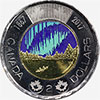
150th Anniversary of Canada - 2017 Canadian Coins
To celebrate the 150th anniversary of Canada, the Royal Canadian Mint launched circulation and special collection coins in 2017. The contest started on March 11, 2015, when the Mint invited the public to create new designs from five theme perspectives: Our Wonders, Our Character, Our Achievements, Our Passions and Canada's Future for the reverse of the 2017 circulating coins.
By thecanadiannumismatist | Friday, February 23, 2024
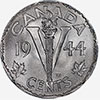
5 cents 1942 to 1945 - World War II, Victory, Tombac and Chrome Nickel Coins
During the Second World War, Canadian nickel was in great demand as a war material. This forced the temporary abandonment of its use in the coining of five-cent pieces. The first substitute material employed was a type of brass, called tombac. To aid in distinguishing them from the bronze one-cent coins, the new yellow five-cent pieces were given a dodecagonal or 12-sided, shape.
By thecanadiannumismatist | Thursday, February 15, 2024
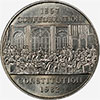
1 dollar 1982 - Constitution
In 1982, agreement was reached between Canada and Great Britain for the repatriation of the Dominion's Constitution. Elizabeth II formally presented the Constition to the Governement of Canada in Ottawa on April 17, 1982. It was signed by Queen Elizabeth II, Prime Minister Pierre Trudeau, Minister of Justice, Jean Chrétien, and André Ouellet, the Registrar General.
By thecanadiannumismatist | Friday, January 12, 2024

King Charles III Effigy Unveiling for New Canadian Coins
A ceremony at the Mint's Winnipeg manufacturing facility took place to unveil the effigy His Majesty King Charles III that will appear on the obverse of all Canadian coins. The first strike of the new circulation coin bearing the new image was also made.
By thecanadiannumismatist | Tuesday, November 14, 2023
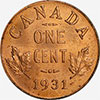
Top 10 most valuable Canadian coins sold at auction in 2023
Here's the Top 10 most valuable Canadian coins sold at auction in 2023 so far.
By thecanadiannumismatist | Sunday, November 12, 2023

25 cents 1999 and 2000 Millennium Coins
For the upcoming 21st century, the Royal Canadian Mint planned to issue special circulation coins to be released each month. The reverse designs, to replace the caribou, were selected from over 33,000 designs submitted by Canadians for the Create a Centsation! coin design contest.
By thecanadiannumismatist | Thursday, October 19, 2023

5 cents 1951 - Nickel refinery
To celebrate the 200th anniversary of the discovery and naming of the element nickel by Swedish chemist A.F. Cronstedt, it was decided to produce a special circulating 5-cent coin. During World War I, Canada had becme the world's largest producer of nickel with over 90% of global producation (95% exported).
By thecanadiannumismatist | Tuesday, October 17, 2023
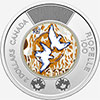
2 dollars 2023 - Jean-Paul Riopelle
On the 100th anniversary of the birth of visual artist Jean Paul Riopelle, the Royal Canadian Mint is issuing a new $2 circulation coin. Limited to a mintage of three million coins, of which two million will be coloured.
By thecanadiannumismatist | Thursday, October 5, 2023
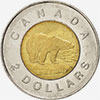
2 dollars 1996 - From Banknote to Coin
The bimetallic new coin went into circulation on February 19, 1996 with more than 315 millions of pieces. This savings is due to the 20-year lifespan for the coin versus a one-year lifespan for the two dollar note. It had been almost 10 years since the paper Canadian dollar made the transition to coin. The loonie began circulating in 1987. As of now, only one monarch, Elizabeth II, is featured for this denomination.
By thecanadiannumismatist | Tuesday, September 26, 2023
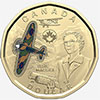
1 dollar 2023 - Elsie MacGill, Queen of Hurricanes
She worked at Canadian Car and Foundry (CanCar) during World War II and was the person chosen to build the Hawker Hurricane fighter plane for the Royal Air Force. The factory grew from around 500 people to 4,500 at the end of the war, half of them women. The Hurricane earned her the nickname Queen of the Hurricanes.
By thecanadiannumismatist | Tuesday, August 1, 2023
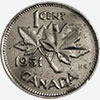
Silver and gold coloured 1 cent coins
The process to give 1 cent coin a silver or gold colour is easy enough that there are many of them out there. Even if they are amusing to look at, these fabrications remain trivial.
By thecanadiannumismatist | Monday, July 24, 2023
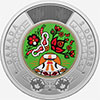
2 dollars 2023 - National Indigenous Peoples Day
The Royal Canadian Mint unveiled, on June 20 at the National Gallery of Canada in Ottawa, a 2 dollars circulation coin celebrating National Indigenous Peoples Day. National Aboriginal Day, now National Indigenous Peoples Day, was announced in 1996. National Indigenous Peoples Day is part of the Celebrate Canada program, which also includes Saint-Jean-Baptiste Day on June 24, Canadian Multiculturalism Day on June 27 and Canada Day on July 1.
By thecanadiannumismatist | Tuesday, June 20, 2023
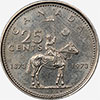
25 cents 1873-1973 Mountie Canadian Coin
A one-year-only commemorative Mountie reverse design for the 25 cents 1973 was chosen to commemorate the 100th anniversary of the North-West Mounted Police later called the Royal Canadian Mounted Police.
By thecanadiannumismatist | Monday, June 5, 2023
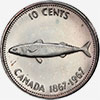
1967 Canadian coins designs
A $2,500.00 First Prize was offered for the winning designs in each of the 6 coinage denominations (1 cent, 5 cents, 10 cents, 25 cents, 50 cents and 1 dollar). These coins were issued in 1967 to commemorate the 100th Anniversary of Confederation (1867-1967).
By thecanadiannumismatist | Wednesday, May 17, 2023

King Charles III on Canadian coins
King Charles III was officially crowned in a coronation ceremony on May 7. This is the first coronation to take place in 70 years, since that of the late Queen Elizabeth II in 1953. During the coronation events, the federal government announced that image of King Charles will eventually replace the queen on Canada's coins.
By thecanadiannumismatist | Monday, May 8, 2023

List of Very High Graded Certified Circulating Coins
Grading coins or notes is a subjective area. Even if there is some degree of consensus, opinions vary from person to another and from a grading company to another. Furthermore, grades are defined differently in some countries.
By thecanadiannumismatist | Friday, March 10, 2023
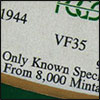
Buy the Holder, Not the Coin!
In early February 1986, PCGS used slabs with perf edges insert, and alignment pins, for a very short time of the first few days of PCGS operations. In 1992, the company introduced premium The Regency Holder. Because the small number of these holders in existence, coins in them are always sold for a premium.
By thecanadiannumismatist | Sunday, March 5, 2023

Lowball Canadian Coins
There are as many ways to collect as there are collectors. Contrary to the general norm of getting the best-preserved coin in existence, some people seek out and hoard coins with as much wear as possible. First made popular in the United States, this type of coin is nicknamed lowball.
By thecanadiannumismatist | Tuesday, December 13, 2022

2 dollars 2022 - Honouring Queen Elizabeth II
For 70 years, Queen Elizabeth II dutifully and gracefully served as Canada's head of state. And, until her passing on September 8, 2022, she was the only sovereign many Canadians had ever known.
By Royal Canadian Mint | Wednesday, December 7, 2022

Cameo on Canadian coins
Cameo defines a frosted visual appearance of the design of a coin with a polished appearance of the field, mostly for specimen, proof-like and proof finishes. This visual eye appeal adds to the value of a coin.
By thecanadiannumismatist | Tuesday, December 6, 2022
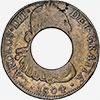
Top 10 most valuable Canadian coins sold at auction in 2022
Here's the Top 10 most valuable Canadian coins sold at auction in 2022 so far.
By thecanadiannumismatist | Monday, November 14, 2022

1 dollar 2022 - Alexander Graham Bell
On the 175th anniversary of his birth, Alexander Graham Bell is being recognized for his numerous breakthrough inventions, and the legacy of innovation he fostered over the many years he spent working and living in Canada.
By Royal Canadian Mint | Thursday, October 20, 2022

2 dollars 2022 - 1972 Summit Series
Fifty years to the day since the last game was played in an epic clash between hockey superpowers, the Royal Canadian Mint is issuing a $2 circulation coin celebrating the triumph of Team Canada over the Union of Soviet Socialist Republics team (Team USSR) in the 1972 Summit Series.
By Royal Canadian Mint | Thursday, September 29, 2022
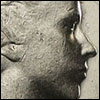
Queen Elizabeth II on Canadian Coins and Banknotes
Queen Elizabeth II, longest-serving monarch, has died on September 8, 2022, at Balmoral aged 96, after reigning for 70 years. Here's a list of major changes in coins and banknotes related to the Queen Elizabeth II portrait.
By thecanadiannumismatist | Sunday, September 11, 2022
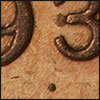
1 cent 1936 Dot - Fake vs Real
Amongst the most famous rarities in Canadian numismatics, struck in 1937 prior to the creation of coinage dies for George VI, but never released for circulation, the 1936-dated Dot cent has seen its reputation grow exponentially since its discovery.
By thecanadiannumismatist | Sunday, September 11, 2022

1 dollar 2022 - Oscar Peterson
The Royal Canadian Mint is honouring one of the greatest musicians the world has ever seen by issuing a new $1 commemorative circulation celebrating the life and artistic legacy of Canada's own Oscar Peterson.
By Royal Canadian Mint | Thursday, August 11, 2022
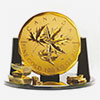
The million dollar Canadian gold coin
In 2007, the Royal Canadian Mint produced the world's first million dollar coin. The 100 kg, 99999 pure gold bullion coin with a $1 million face value was originally conceived as a unique showpiece to promote the Mint's new line of 99999 pure 1 oz Gold Maple Leaf bullion coins.
By thecanadiannumismatist | Tuesday, June 7, 2022

Unusual Canadian coins errors and oddities
Even if some of the following coins were probably man-made at the Mint out of the regular production process, these oddities are often stunning and very intriguing. It's unlikely that anyone have a chance to find something similar in change or by coin roll hunting.
By thecanadiannumismatist | Wednesday, May 4, 2022
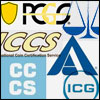
A simple guide to coins certification: third-party grading companies
Coin grading and certification companies have taken the industry since a couple of decades. New ones are created each year, but only large-scale companies certifying Canadian coins are reported in the following list. This guide is designed to assist collectors to choose a certification service that fits their needs.
By thecanadiannumismatist | Wednesday, March 30, 2022

Top 10 most valuable Canadian coins sold at auction in 2021
The sale of one of the 1936 Dot cent marked the end of this substantial year in Canadian numismatic now that the shows are starting to take place again in person. Collectors also had the chance to acquire some of the highest known 25 cents coins with the Marlborough Collection of George V Quarters sale.
By thecanadiannumismatist | Tuesday, November 23, 2021

10 cents 2021 - Coloured Bluenose
To celeberate the 100th anniversary of the Bluenose, the Mint has re-designed and launched a new 10 cents with a new design by Nova Scotia marine artist Yves Bérubé. To add to this occasion, the Mint also launched Canada's first-ever coloured dimes, featuring a touch of blue that brings to life Bluenose. All other 10-cent coins manufactured this year with the classic schooner reverse design are also being doubled-dated 1921-2021.
By thecanadiannumismatist | Wednesday, October 27, 2021

1 dollar 2021 - The Klondike Gold Rush
Royal Canadian Mint announced this week a circulating $1 coin that commemorates the 125th anniversary of the Klondike Gold Rush. The moment is captured on the $1 coin that is twice featured here–as a struck version, and as a selectively coloured one.
By thecanadiannumismatist | Friday, September 24, 2021

2 dollars 2021 - Discovery of insulin
The Royal Canadian Mint issued a new $2 circulation coin celebrating the fact that, 100 years ago, four researchers achieved a Canadian medical breakthrough. In 1921, the collaboration of Frederick Banting, Charles Best, James Collip and John Macleod led to the isolation and purification of insulin and offered a life-saving treatment to people whose lives would previously have been cut short by diabetes.
By Coinsandcanada | Tuesday, July 13, 2021

1 cent 2006 - Composition and varieties
Due to the rising price of copper, the Royal Canadian Mint started to change the composition of Canadian 1-cent coins. In 1999 and 2000, several coins were issued, mostly in sets, for testing in vending machines. From a copper to steel, a new production method, called multi-ply plating, combined with the new composition, were use for Canadian coinage, and for several foreign coins.
By Lightw4re | Thursday, March 4, 2021
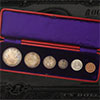
The unique Canadian 1936 Dot specimen set
In 1936, a tiny dot was placed on each of the reverse dies; on the 1 cent piece the dot appeared under the date, while on the 10 and 25 cents pieces it was placed under the bow on the wreath. Despite the critical shortages that had led to the emergency production of the dot coins, it appears that only 25 cents pieces were put into circulation. Consequently, the 1 and 10 cents are rarer.
By Lightw4re | Friday, November 20, 2020

Top 10 most valuable Canadian coins sold at auction in 2020
Last year was historical due to the amount of high-end coins that sold at auctions. This year is historical for another reason: COVID-19. Because of the restrictions and limitations on social gatherings around the country, most auctions were online exclusively, without any attendance at physical shows. Nevertheless, the rising prices for precious metals attracted and animated the Canadian coins market. Here's the Top 10 most valuable Canadian coins sold at auction in 2020 so far.
By Lightw4re | Wednesday, October 14, 2020
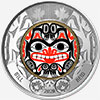
Bill Reid commemorative circulating 2 dollars 2020
On July 28, 2020, Royal Canadian Mint launched two new circulation 2-dollar coins (including a red and black colored one) to commemorate Bill Reid contributions to contemporary Indigenous art. The bold image of a grizzly bear, a favourite character of Reid's paintings, carvings and jewelry, fills the reverse side of the commemorative coin.
By Lightw4re | Tuesday, July 28, 2020
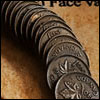
How to sell your coins
You have inherited of a collection, you no longer collect, you need money for essential life expenses, you want to sell a part of your collection to buy other numismatic products... Whatever the reason, this 3-steps guide was created to help you sell your coins and get the most out of them.
By Lightw4re | Thursday, July 23, 2020
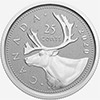
PL, SP, PR, BU: Determine the right finish on coins
Circulation, Proof-like (PL), Specimen (SP), Proof (PR or PF), BU, NBU, Matte, Reverse Proof. Find several finishes used by the Royal Canadian Mint to produce circulation and collector coins.
By CAC | Friday, February 28, 2020
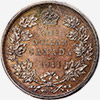
Top 10 most valuable canadian coins sold at auction in 2019
Mostly because of the George Hans Cook Collection of Canadian Coinage auction, the most complete collection of Canadian coins ever assembled, some of the greatest and rarest canadian coins changed hands this year. Here's the Top 10 most valuable canadian coins sold at auction in 2019 so far.
By Lightw4re | Wednesday, November 27, 2019
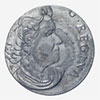
Struck on a Ballcone burnishing beads?
These coins appear to be struck on Stainless Steel Ballcones. They weigh 1.11 grams, are magnetic and enlarged 5x in the image above. Burnishing is a process that involves tumbling the planchets in a large drum with small steel ballcones.
By Patrick Glassford | Tuesday, September 3, 2019
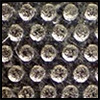
Knurling on 2004 to 2022 circulating Canadian coins
Since 2004, Royal Canadian Mint issued 19 circulating coins with different colored design for several denomations. This article illustrates my observations as a collector who wanted to know more about who it's made. It isn't meant to be technical or scientific. By looking at the coins, which the color has been removed, we can see the changes that were made over the years.
By castor | Tuesday, January 29, 2019
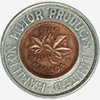
Canadian encased coins
Encased coins are coins that have been inserted into a holder that changes the character of the coin from money to an advertising or souvenir device. The concept was really popularized at the Pan American Exposition in 1901 and was used extensively throughout the the 20th century for advertising.
By Gaetan C. | Wednesday, October 10, 2018
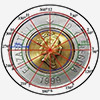
List of hours, degrees and percentages
To identify the percentage, degree and time on the obverse or reverse of circulating canadian coins based on their effigy.
By castor | Tuesday, May 2, 2017
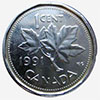
This is not an error
Here are some relatively common examples of coins with marks that aren't genuine errors and varieties.
By Lightw4re | Tuesday, April 18, 2017

5 cents and 50 cents 1921 - Sales history
Sales history of the 5 cents 1921 and the 50 cents 1921.
By Lightw4re | Thursday, March 16, 2017

Foreign Coins Struck by the Royal Canadian Mint
Since its opening in 1908, the Royal Canadian Mint has produced coinage and planchets for 89 countries (90 counting Canada). Mintage's prior to 1980 are directly from RCM yearly reports. Some mintage figures here may be confusing as they are shared between two or more Mints.
By Patrick Glassford | Sunday, March 9, 2014
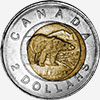
2 dollars planchet varieties
Types that occur due to variations (errors) that occur during the creation of the planchet (or components of the planchet).
By thecanadiannumismatist | Sunday, March 9, 2014
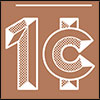
Phasing out the Penny
In Economic Action Plan 2012, the Government announced it would phase out the penny from Canada's coinage system. The decision to phase out the penny was due to its excessive and rising cost of production relative to face value, the increased accumulation of pennies by Canadians in their households, environmental considerations, and the significant handling costs the penny imposes on retailers, financial institutions and the economy in general.
By Royal Canadian Mint | Monday, February 4, 2013

Coin Production
Our Ottawa headquarters and Winnipeg manufacturing plant form one of the world's most sophisticated minting operations, equipped with incredibly advanced coin production technologies.
By Royal Canadian Mint | Thursday, May 3, 2012

Collection of Short Articles for Beginners - APNA
Here's a list of short articles for novices to beginners previously published on the Atlantic Provinces Numismatic Association website from 2006 to 2011 and presented here for educational purpose.
By Atlantic Provinces Numismatic Association | Tuesday, November 8, 2011

5 Reasons to Buy and Collect Certified and Graded Coins
Why should a coin collector and investor buy and collect professionally graded and certified coins? Commonly called "slabs", they are housed in a protective plastic holder. There are many companies - over a dozen are less than 2 years old - which will put your coin in a slab after Certifying that it is Authentic, and assigning a Grade to the coin.
By Atlantic Provinces Numismatic Association | Tuesday, November 8, 2011

Gold and Silver Maple Leafs Get New Packaging
Gold Maple Leafs and Silver Maple Leafs are receiving packaging makeovers, changes clearly mandated by investor disfavor with packaging that the Royal Canadian Mint has used since the coins were introduced. Gold Maple Leafs debuted in 1979, Silver Maple Leafs in 1988. The changes appear to be good moves, which should increase sales of Silver Maple Leafs and help keep Gold Maple Leafs the preferred pure (.9999 fine) gold bullion coins.
By Atlantic Provinces Numismatic Association | Tuesday, November 8, 2011
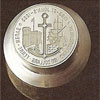
Dies production and statistics
Only Royal Canadian Mint reports from 1935 to 1962, with the exception of 1936, contain information regarding the life and usage of dies. In 1935, the average number of coins struck per die was 69,224 while in 1962 it rose to 186,230. A significant increase of 300% in 27 years.
By Patrick Glassford | Tuesday, April 19, 2011

How planchets are made at the RCM
The process of creating planchets involves several operational sections in the Royal Canadian Mint (RCM).
By Patrick Glassford | Sunday, February 14, 2010
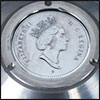
The Creation of Canadian Dies
The design of a die usually begins as a concept or a theme. Before the design is chosen, a suitable sketch may be obtained in several ways. The most direct way is to generate the sketch in house.
By Patrick Glassford | Sunday, February 14, 2010
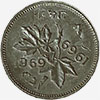
Strike Varieties
The following content comes from Patrick Glassford website which no longer exist. To keep this information available to the public and for a perpetuity reason, we reproduced it here.
By Patrick Glassford | Sunday, February 14, 2010
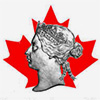
Grading Canadian Coins
Coins are usually described by their country of origin, type, denomination, date, mint mark, variety and condition. With all but the last of these, there is rarely any ambiguity. However, with their state of preservation or condition, there often are differing opinions, so a standard system of grading coins has evolved which allows us to more clearly determine and communicate their relative quality.
By Michael Walsh - Canadian Coinoisseur | Monday, July 20, 2009
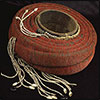
What is money?
When we think of money, we typically think of bank notes and coins. But today, the bulk of money consists of deposits in financial institutions, which exist merely as signals in computer memories. As civilizations evolve, they search for more efficient means of exchange. Consequently, money has changed from objects with considerable intrinsic value to the purely symbolic, its value hinging solely on the reputation of the issuer.
By Bank of Canada | Monday, December 1, 2008
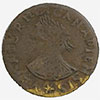
The National Currency Collection
When we think of money, we typically think of bank notes and coins. But today, the bulk of money consists of deposits in financial institutions, which exist merely as signals in computer memories. As civilizations evolve, they search for more efficient means of exchange. Consequently, money has changed from objects with considerable intrinsic value to the purely symbolic, its value hinging solely on the reputation of the issuer.
By Bank of Canada | Monday, December 1, 2008

Money Talks
Objects used as money by diverse cultures throughout history reveal a great deal about what these societies valued, both literally and figuratively. They also provide clues about the sophistication and state of their economies and their politics, as well as their art and religion. In primitive societies, money was practical in nature.
By Bank of Canada | Monday, December 1, 2008

Money Troubles
People seek to acquire money not for itself but to exchange it for desired goods and services, now or in the future. Consequently, they must be confident that the object being used as money is widely accepted by others and that it will retain its purchasing power over time. While having more money can benefit an individual, too much money in circulation relative to the supply of goods and services will lead to rising prices inflation.
By Bank of Canada | Monday, December 1, 2008

The Sinews of War
War exacts a terrible toll on society. Along with untold human suffering and loss of life, the economic cost in terms of damaged property and lost opportunities can be incalculable, even for the victor. When a society calls up its soldiers, it also mobilizes its economy, with resources diverted from peacetime to wartime production. To finance this transformation and the costs of waging war, a country's monetary and financial system is brought into play.
By Bank of Canada | Monday, December 1, 2008
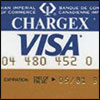
From Cash to Cybermoney
Financial innovation is permitting people to access the money they hold in the form of deposits in new ways. Fifty years ago, besides cash, cheques were the most common form of payment used by consumers and businesses. Today, retail payment instruments include credit and debit cards and stored-valued cards.
By Bank of Canada | Monday, December 1, 2008

The Hobby of Kings
Although Roman emperors reputedly collected coins, modern collecting traces its origins to the great Renaissance poet and author Petrarch, in the 14th century. Subsequently, European royalty and popes, fascinated by all things classical, became avid collectors of coins; hence the nickname, hobby of kings.
By Bank of Canada | Monday, December 1, 2008
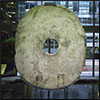
Beads to Bytes - Canada's National Currency Collection
Money has always been a source of endless fascination. Few can do without it, and the quest to acquire it, through both fair means and foul, has preoccupied people throughout history. It has been said that the love of money is the root of all evil, but in reality no modern civilization could function without it. Money is the lubricant of commerce, linking buyers and sellers, borrowers and lenders.
By Banque du Canada | Monday, December 1, 2008

Michael Walsh Torex Auctions results
The following content comes from the Canadian Coinoisseur website, which not longer exist since 2014, by Michael Walsh. To keep this information available to the public and for a perpetuity reason, we reproduced it here. Through newsletter, Walsh published some Torex Auctions results between 2000 and 2010. Here are some of these newsletter.
By Michael Walsh - Canadian Coinoisseur | Saturday, November 1, 2008
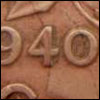
Die clash possibilities
To help you to identify die clash on canadian coins, here's a list of images that show you obverses and reverses die clash possibilities.
By castor | Thursday, October 9, 2008
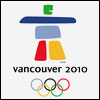
Vancouver 2010 - Olympic Coins
Find out all coins of the three year program of circulation and collector coins in honour of the Vancouver 2010 Olympic and Paralympic Winter Games.
By Lightw4re | Friday, September 12, 2008
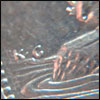
5 cents 1964 - Extra Water Line
Even if there are a lot of errors and varieties on the 5 cents 1964, like the whistling queen, the most popular is and will always be the Extra Water Line (XWL) in front of the beaver.
By Lightw4re | Monday, September 8, 2008

Terry Fox Dollar Varieties
Find the varieties of the Terry Fox 2005 dollar with images of several zones on this coin. Here's the list of varieties : Normal (grass), without trees, half grass, no grass./p>
By La Loutre | Saturday, August 30, 2008
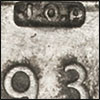
J. O. P. Dollars
One of the strangest episodes in Canadian numismatic history centres about these coins. For twenty years they remained a mystery, and what is stranger still, there was no particular reason why they should have been any mystery at all.
By Patrick Glassford | Sunday, January 14, 2007
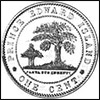
The 1871 Prince Edward Island Cent
The province of Prince Edward Island decided to adopt the Decimal Currency system from the Sterling in 1871. The Royal Mint in London, England was contacted to contract for the coinage of the P.E.I. cent. The Mint told the P.E.I. Treasury that domestic requirements would be too great to leave time for the P.E.I. contract before shipping closed the first of December.
By Prince Edward Island Numismatic Association | Tuesday, April 5, 2005
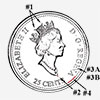
The Millennium Planchet - Die - Strike Project
The challenge undertaken by the Royal Canadian Mint to produce twenty-four different circulating Twenty-Five Cent coins in a two year period provides a special opportunity for numismatists to focus in on the problems faced by modern mints, associated with the design of a die and the life span of those dies when they are put to use.
By Patrick Glassford | Tuesday, November 2, 2004
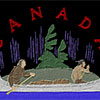
Design in Canadian Coins - 1935 to 1967
The following content comes from Patrick Glassford website which no longer exist. To keep this information available to the public and for a perpetuity reason, we reproduced it here.
By Patrick Glassford | Sunday, July 4, 2004
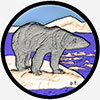
Coinage Designs of 1996
The following content comes from Patrick Glassford website which no longer exist. To keep this information available to the public and for a perpetuity reason, we reproduced it here.
By Patrick Glassford | Sunday, July 4, 2004

Currency Museum of the Bank of Canada
The National Currency Collection contains some 100,000 items consisting of coins, tokens and paper money in the custody of, or owned by, the Bank of Canada. It includes a relatively complete collection of the coins, tokens and of paper money that have been used or are now being used in Canada. The purpose of the collection is to portray the development of money through the ages with particular emphasis on the history of Canada's currency.
By Library and Archives Canada | Monday, March 29, 2004

Pre-European Contact
Before the arrival of the Europeans in the early 16th century, Canada was inhabited by its First Nations. They did not use currency but traded in goods and services on a barter basis. Certain objects, however, were regarded as having special economic and social value.
By Library and Archives Canada | Monday, March 29, 2004

Early European Contact and the Fur Trade
Among the First Nations of the east, wampum was most often used to measure wealth and for gift-giving. The wampum belt you see on the screen is made of small cylindrical shells strung together. In addition to being used as a means of payment, wampum belts also had ceremonial uses, such as the marking of peace treaties, the summoning of the various nations to war, or the recording of important events in the history of the people.
By Library and Archives Canada | Monday, March 29, 2004
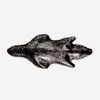
Trade Silver - The Beaver
The North American First Nations for many years made ornaments of bone, shell and stone. The coming of the Europeans introduced them to ornaments made of brass, copper and silver. The early French fur traders soon learned that the Aboriginals were more than willing to exchange their furs for metal ornaments, especially silver.
By Library and Archives Canada | Monday, March 29, 2004
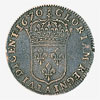
The Shortage of Coins
The colonists living in New France from the mid-1660s on used barter to exchange goods but also used metal coins, such as this 15-sol French coin dated 1670. However, there was never enough hard currency to go around.
By Library and Archives Canada | Monday, March 29, 2004
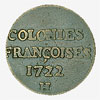
The Coin Shortage Continues
By 1720, the King of France decided to ban the practice of issuing playing card money. The colony's inhabitants were forced to make do with coinage supplied from France, such as the 30-deniers coin known as a mousquetaire because its cross resembled that adorning the capes of the famous musketeers.
By Library and Archives Canada | Monday, March 29, 2004
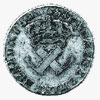
France, Louis XV, 9 deniers, 1721-22
There was a chronic shortage of currency in New France throughout the French Regime; coins brought out from the mother country returned almost immediately to France. Governor after governor pleaded with the French king to provide distinctive coins that would remain in the colony because they would be unacceptable in France.
By Library and Archives Canada | Monday, March 29, 2004

France: Nine-Deniers, Copper, 1722 H
The copper coin illustrated is one of a colonial issue that the Company of the Indies, a private French trading company, imported into New France under the authorization of Louis XV. The colonists, however, were reluctant to use the new coinage because of their previous experience with depreciation of copper coins.
By Library and Archives Canada | Monday, March 29, 2004
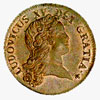
France, Louis XV, copper sol, 1719
Copper coins were not widely used in New France for a large part of its 150-year history. The reason for this apparent anomaly was a distrust of copper coinage that developed early in the commercial life of the colony.
By Library and Archives Canada | Monday, March 29, 2004
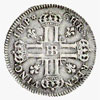
France, Louis XV, 1 livre, 1720BB
John Law was a Scottish banker who emigrated to France and became financial adviser to Louis XV. He eventually gave King Louis ample reason to wish that the Scot had never left his native land. Law recommended the establishment of La Banque Royale which became commonly known as La Banque de Law.
By Library and Archives Canada | Monday, March 29, 2004
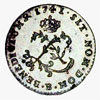
France, Louis XV, double sol (sou marqué), 1741B
During the French regime in Canada the need for higher denominations of currency was filled by paper money. The lowest denomination of this paper money, however, was 7 sols 6 deniers.
By Library and Archives Canada | Monday, March 29, 2004
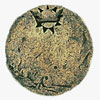
The Spanish-American Dollar
The British colonial period did not mean an end to the shortage of coinage. The economy was still extremely dependent on the fur trade, and any coins arriving from England immediately found their way back.
By Library and Archives Canada | Monday, March 29, 2004
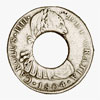
Prince Edward Island, holey dollar, 1804
Upon his arrival in P.E.I. in 1813, Charles Douglass Smith, the island's newly appointed lieutenant-governor, discovered that there was a serious shortage of circulating coin. Although Spanish coins, mainly the dollars or 8-reale pieces, occasionally found their way to the island in trade, they rarely remained in circulation because they were used to pay for imported goods.
By Library and Archives Canada | Monday, March 29, 2004
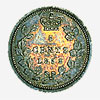
The Move to the Decimal System
During the 1850s, trade burgeoned between the United States and the colonies of British North America. The British colonies, led by the Province of Canada, became convinced that they needed to replace the sterling system, which had been used since 1760, with the decimal system used in the United States.
By Library and Archives Canada | Monday, March 29, 2004
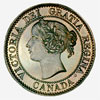
Province of Canada, Victoria, one cent, 1858-1859
All of the British North American colonies originally had currency systems based on pounds, shillings and pence, though foreign coins circulated widely. By the 1850s, however, growing trade with the United States and the widespread use of U.S. and certain Spanish-American coins led the colonies to seek adoption of decimal currency systems with dollar, cent and mil units.
By Library and Archives Canada | Monday, March 29, 2004
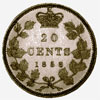
Province of Canada, Victoria, 20 cents 1858
The Province of Canada, which existed as a political entity from 1841 to 1867 and consisted of what are now Ontario and Quebec, was the first part of British North America to adopt the familiar decimal system of currency by an act passed in 1857.
By Library and Archives Canada | Monday, March 29, 2004
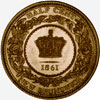
New Brunswick, one-half cent, 1861
Perhaps the most curious of all the decimal coins of the British North American provinces is the New Brunswick half cent. It was never ordered, nor indeed even required, by the colony! In 1859-60 both New Brunswick and Nova Scotia adopted a decimal currency system. The Nova Scotia government, however, wished to keep British silver in circulation as well.
By Library and Archives Canada | Monday, March 29, 2004
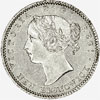
New Brunswick, Victoria, 10 cents, 1864
The decimal coinage issued by the Province of Canada in 1858 brought some semblance of order to the chaotic scramble for small change that was usual in the colonies. Since people had been using English and American coins as well as local tokens in their everyday transactions, the new currency was welcome.
By Library and Archives Canada | Monday, March 29, 2004
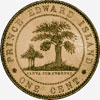
Prince Edward Island, one cent, 1871
Prince Edward Island was the last of the British North American colonies to adopt a decimal system of currency. 'Going decimal' in 1871, the island chose a dollar equal in value to the United States one-dollar gold piece, in line with the decimal currency system introduced earlier in the Provinces of Canada and New Brunswick and adopted by the Dominion of Canada in 1867.
By Library and Archives Canada | Monday, March 29, 2004
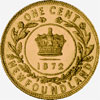
Newfoundland, one cent, 1872H
Newfoundland, a separate British colony, was allowed to issue its own coinage beginning in 1865. The lowest denomination issued was the one cent, which was one inch in diameter and made of bronze. The design of this coin was the subject of some discussion between colonial and home office authorities.
By Library and Archives Canada | Monday, March 29, 2004

Newfoundland, one cent, 1938
Newfoundland had had its own currency since 1865 and over the years the people became very attached to their large one-cent pieces, an inch in diameter, and to their "fish scales," as the small silver five-cent pieces were locally known.
By Library and Archives Canada | Monday, March 29, 2004
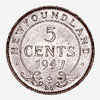
Newfoundland, five cents, 1947C
John Cabot is given credit for the discovery of Newfoundland in 1497, although many believe that the Vikings were there hundreds of years earlier. By 1583 the English had firmly established their rule over the island, and Newfoundland remained a British colony until 1949, when it entered Confederation as the tenth province of Canada.
By Library and Archives Canada | Monday, March 29, 2004
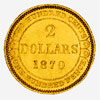
Newfoundland, two dollars, 1870
Like all other British North American colonies, Newfoundland adopted, in the mid-19th century, a decimal currency consisting of dollars-cents-mils. However, in introducing the new currency in 1865, Newfoundland, unlike other colonies, chose to include a gold coin among the denominations it was issuing.
By Library and Archives Canada | Monday, March 29, 2004
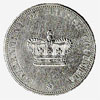
British Columbia, 20 dollars, 1862
In the late 1850s, gold was discovered in the Fraser River and Cariboo districts of British Columbia. The gold rush that followed brought a large influx of new inhabitants, changing the colony virtually overnight from a small settlement based on trading to a rapidly expanding one. The almost complete lack of a circulating medium occasioned great inconvenience.
By Library and Archives Canada | Monday, March 29, 2004
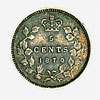
Canada's First Coinage
With the creation of the Dominion of Canada in 1867, the central government assumed responsibility for money and banking, as mandated under section 91 of the British North America Act, and it undertook to standardize the fledgling country's currency.
By Library and Archives Canada | Monday, March 29, 2004

Canada, one cent, Palmers Pond wreck (January 26, 1897)
Coins have often been used, officially and unofficially, to commemorate important events. This counterstamped one-cent piece is an example of an unofficial use to mark an event of local significance. On January 26, 1897, a CPR train on its way from Halifax to Saint John was a few minutes late leaving Sackville. It was scheduled to arrive in Moncton at noon.
By Library and Archives Canada | Monday, March 29, 2004
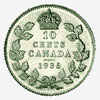
Canada, 10 cents, 1936 dot
In Canadian coinage, some of the more interesting varieties - differences within a given coin issue - occurred in connection with the abdication of King Edward VIII.
By Library and Archives Canada | Monday, March 29, 2004
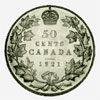
Canada, 50 cents, 1921
Canada's 1921 fifty-cent piece is a very rare coin; fewer than 200 are believed to exist. This is a direct result of the great variation in demand for fifty-cent pieces since their introduction in Canada in 1870. At times the coins were very popular; at other times, as in recent years, they were seldom seen in circulation.
By Library and Archives Canada | Monday, March 29, 2004

Canada, 10 dollars (gold), 1912
During the first 40 years of its existence, the Dominion of Canada had no gold coinage of its own although various foreign gold coins, notably British sovereigns and several United States denominations, were used.
By Library and Archives Canada | Monday, March 29, 2004

Canada, 10 dollars (bronze pattern), 1928
In 1927 the Dominion authorities requested that the Royal Mint in London prepare new reverse dies for Canada's gold coinage. A new coat of arms had been approved for the Dominion in 1921, and it was felt that if, in the future, Canada should decide to issue another series of gold coins, everything would be in readiness.
By Library and Archives Canada | Monday, March 29, 2004
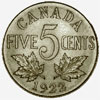
Canada, five cents, 1922
Canada is justly proud of her role as a world leader in nickel production. The value of nickel as a coinage metal has been recognized for many years; not only is it attractive but it is also tough enough to withstand the wear and tear of commercial use for long periods.The use of nickel for Canadian coins dates back to 1922, when the first large five-cent piece was introduced.
By Library and Archives Canada | Monday, March 29, 2004
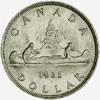
The First Attempt to Canadianize Coinage
The depiction of a canoe on the 1935 silver dollar marked the first attempt to "Canadianize" the designs on the country's coinage. In 1937 a completely new set of coins was issued with designs highlighting themes drawn from Canadian wildlife and flora. These designs, including the famous beaver on the 5-cent coin, grace our coins to this day.
By Library and Archives Canada | Monday, March 29, 2004
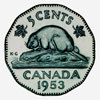
Canada, five cents, 1953
In 1951, during the Korean War, Canada was faced with a shortage of nickel, which had traditionally been used in producing the five-cent piece. To deal with this problem, the Royal Canadian Mint reverted to a solution which had been found during the Second World War. It struck five-cent pieces in steel and plated them with chromium.
By Library and Archives Canada | Monday, March 29, 2004
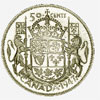
Canada, 50 cents, 1947ML
The coin illustrated is part of the Canadian series designed after the death of King George V. The reigning monarch, George V1, appears on the obverse of all the coins, and the fifty-cent piece features the Canadian coat of arms on its reverse.
By Library and Archives Canada | Monday, March 29, 2004
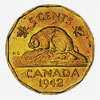
World War II
As in World War I, the metallic composition of coinage had to be altered during World War II. Owing to the increased demand for nickel from the war-related industries, the government decided to mint the 5-cent coin from tombac, an alloy of zinc and copper with a colour similar to that of a penny.
By Library and Archives Canada | Monday, March 29, 2004
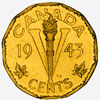
Canada, five cents (tombac), 1943
During the Second World War, Canadian nickel was in great demand as a war material. This forced the temporary abandonment of its use in the coining of five-cent pieces. The first substitute material employed was a type of brass, called tombac. To aid in distinguishing them from the bronze one-cent coins, the new yellow five-cent pieces were given a dodecagonal or 12-sided, shape.
By Library and Archives Canada | Monday, March 29, 2004
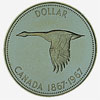
Changes in Coin Design
More than simply the design and composition of Canadian coins have changed over the years. The images of the king or queen have had to change to reflect new circumstances. The portrait of the king or queen has always appeared on our coinage. In 1953, Elizabeth II, the new head of state, made her first appearance on Canadian coins and in 1954, on bank notes.
By Library and Archives Canada | Monday, March 29, 2004
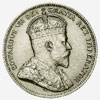
Canada, Edward VII , 25 cents, 1908
Monarchs or heads of state have been a common motif on western coins since ancient times. Five sovereigns have appeared on Canadian coins since Confederation. The second, Edward VII, is portrayed on the silver 25-cent piece of 1908 pictured.
By Library and Archives Canada | Monday, March 29, 2004
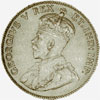
Canada, George V, 25 cents, 1911
With the accession of George V to the British throne in 1910, it became necessary for the Royal Mint in London to produce a set of master tools for the obverse of the new Canadian coins. For the first time the regal portrait for the coins was produced by an artist outside the Mint.
By Library and Archives Canada | Monday, March 29, 2004

Canada, Elizabeth II, one dollar, 1990
The one-dollar coin featured bears the third portrait of Queen Elizabeth II to appear on Canadian coins. This portrait, introduced in 1990, represents a significant milestone in the history of Canadian coinage, as it is the first portrait of the reigning monarch to be designed by a Canadian.
By Library and Archives Canada | Monday, March 29, 2004
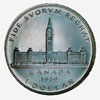
Canada, one dollar, 1939
This coin, the second commemorative silver dollar struck in Canada, was minted to celebrate the visit of King George VI and Queen Elizabeth in 1939. The reverse of the coin depicts the Parliament buildings in Ottawa. The Latin legend FIDE SUORUM REGNAT (He reigns by the faith of his people) appears above.
By Library and Archives Canada | Monday, March 29, 2004
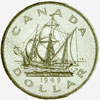
Canada, one dollar, 1949
Although it is now a fairly common practice, the use of our coinage to commemorate a special event was relatively rare prior to the 1960s. The principal coin used for commemorative purposes has been the dollar. One of the most attractive of these coins is the one issued nearly thirty years ago to mark the entry of Newfoundland into Confederation.
By Library and Archives Canada | Monday, March 29, 2004
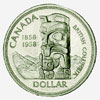
Canada, one dollar, 1958
This silver dollar, with its bold design of mountains behind a totem pole typical of Pacific coast Native Canadians, marks the centennial of British Columbia's establishment as a Crown Colony. In the early 1840s what is now British Columbia was part of the Oregon country and was controlled by the Hudson's Bay Company.
By Library and Archives Canada | Monday, March 29, 2004

Canada, 20 dollars (gold), 1967
Very few gold coins have been struck in Canada, even though gold was widely used throughout the world as a medium of exchange until the early years of this century. Canada issued $5 and $10 gold pieces in 1912, 1913 and 1914 and British sovereigns were struck at The Royal Mint in Ottawa from 1908 to 1919.
By Library and Archives Canada | Monday, March 29, 2004

German Prefab Type Varieties
Types that occur due to variations (errors) that occur during the creation of the Planchet or the Striking of coinage, concerning the German Prefab Type Planchet.
By Patrick Glassford | Saturday, February 14, 2004

CNA Convention a great success
This year's Canadian Numismatic Association annual convention held in Vancouver, Canada in mid-July, was a great success. Altough organizers were hampered in promoting the show due to a newspaper strike, collectors attended from all over canada (particularly the province of British Columbia), as well as quite a large number of collectors from the United States and even from Australia.
By George Manz | Sunday, September 1, 2002

The famous Heaton Mint
The story of the Heaton Mint begins in 1850, when Ralph Heaton II purchased Matthew Boulton's Soho Mint equipment. Boulton was a industrialist who set up the Soho Manufactory in Birmingham, England, later teaming up with James Watt to produce the most advanced version of the steam engine, one that would literally herald the advent of the industrial revolution.
By George Manz | Monday, July 1, 2002
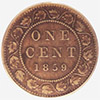
The top 10 Canadian sleepers for 2002
Let's get this straight. This is an article for coin collectors, not for coin speculators. It's about the Canadian coins I believe are sleepers for the prices that are presently being charged. I'm not suggesting that you should run out and purchase any of the coins that I've listed below. Just because I think the following coins are undervalued, doesn't mean you should follow my advice. Decide for yourselves.
By George Manz | Friday, February 1, 2002

Canada's unofficial coin
Before Canadian confederation in 1867, the only official Canadian coins were the Province of Canada's decimal coins of 1858 and 1859. Those dated 1858 included bronze large cents, as well as silver five cents, 10 cents and 20 cents. Large bronze cents were also struck in 1859. But while both large cents were minted by the Royal Mint, they were struck on blanks produced by Ralph Heaton and Sons of Birmingham.
By George Manz | Tuesday, May 1, 2001

A coinage of its own: The Province of Canada's Large Cents 1858-59
After the Province of Canada was formed in 1841 through the union of the colonies of Lower Canada and Upper Canada, the new government decided to mint coins for the new Province because coins were scarce. But it took many years to persuade the British government that it was in the best interests of both Canada and Britain.
By George Manz | Thursday, March 1, 2001
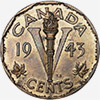
The V for Victory
I want to call them nickels. By I can't. That's because the Royal Canadian Mint issued three V for Victory 5-cent coins that weren't made of nickel from 1943 to 1945. I'm certain most collectors who have even a small Canadian coin collection have these coins. But these common and inexpensive coins have a very interesting history that's not widely known.
By George Manz | Tuesday, January 9, 2001
More articles
- Canadian banknotes
- Canadian tokens and medals
- International
You can submit your own articles by contacting us.



